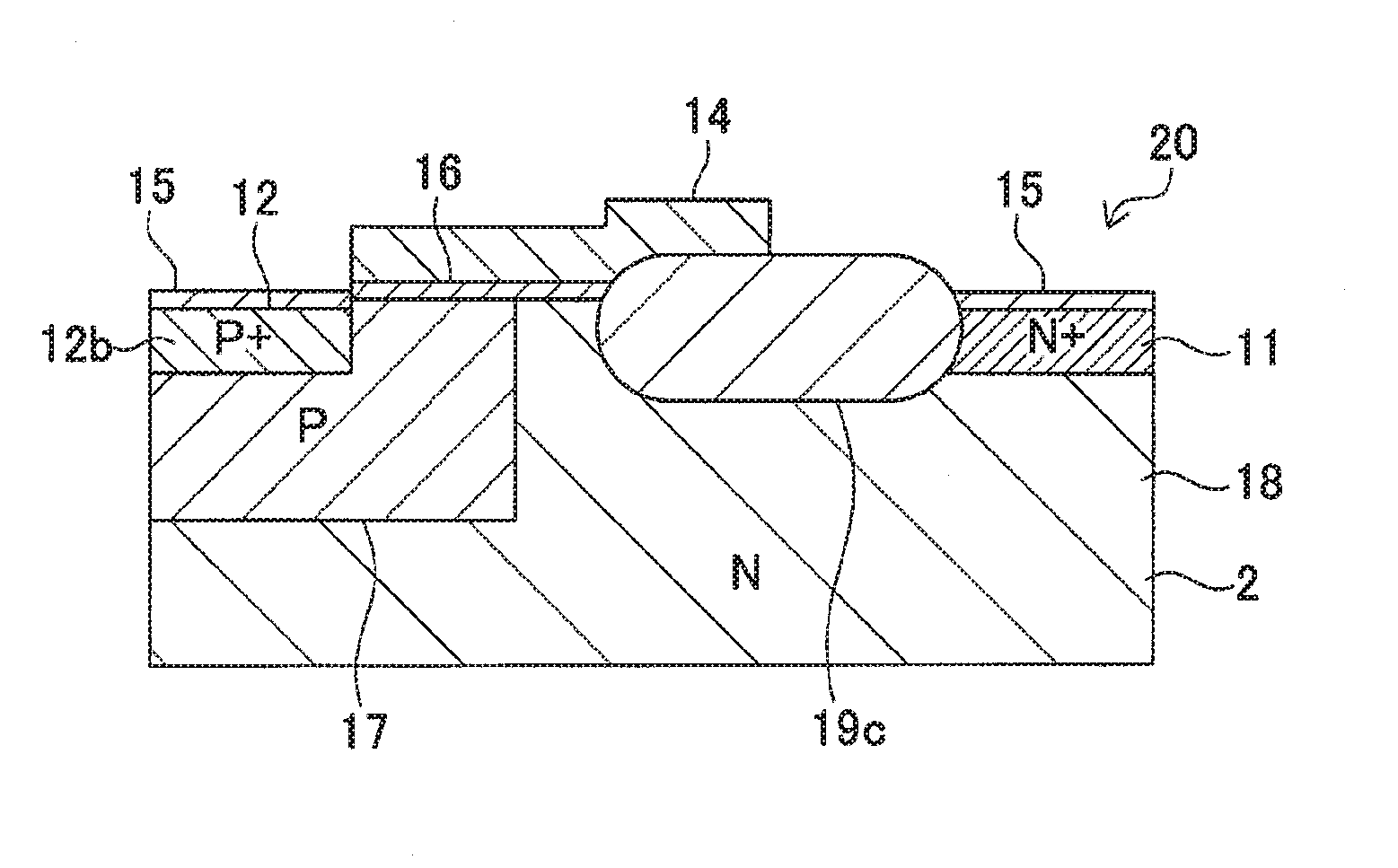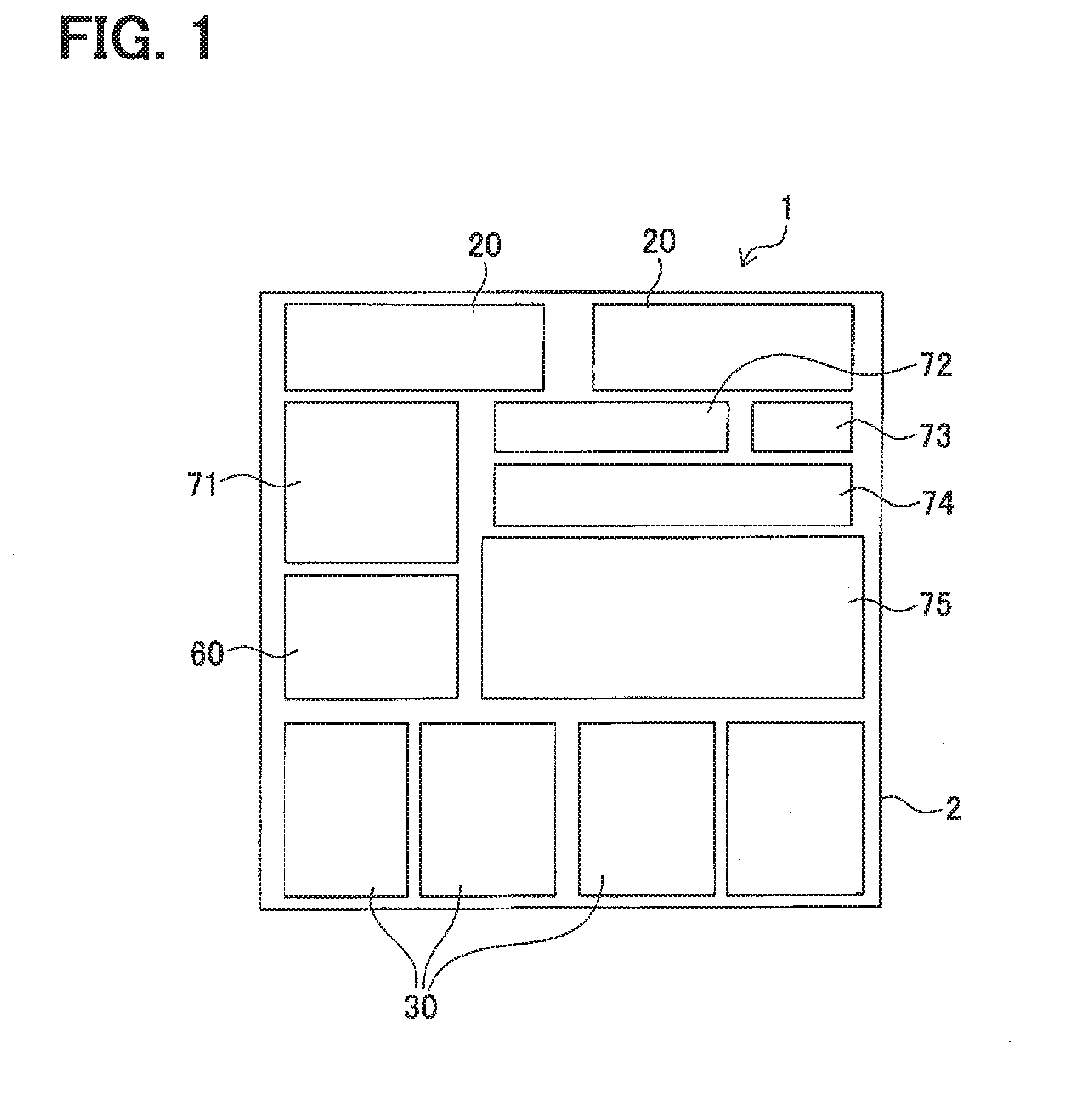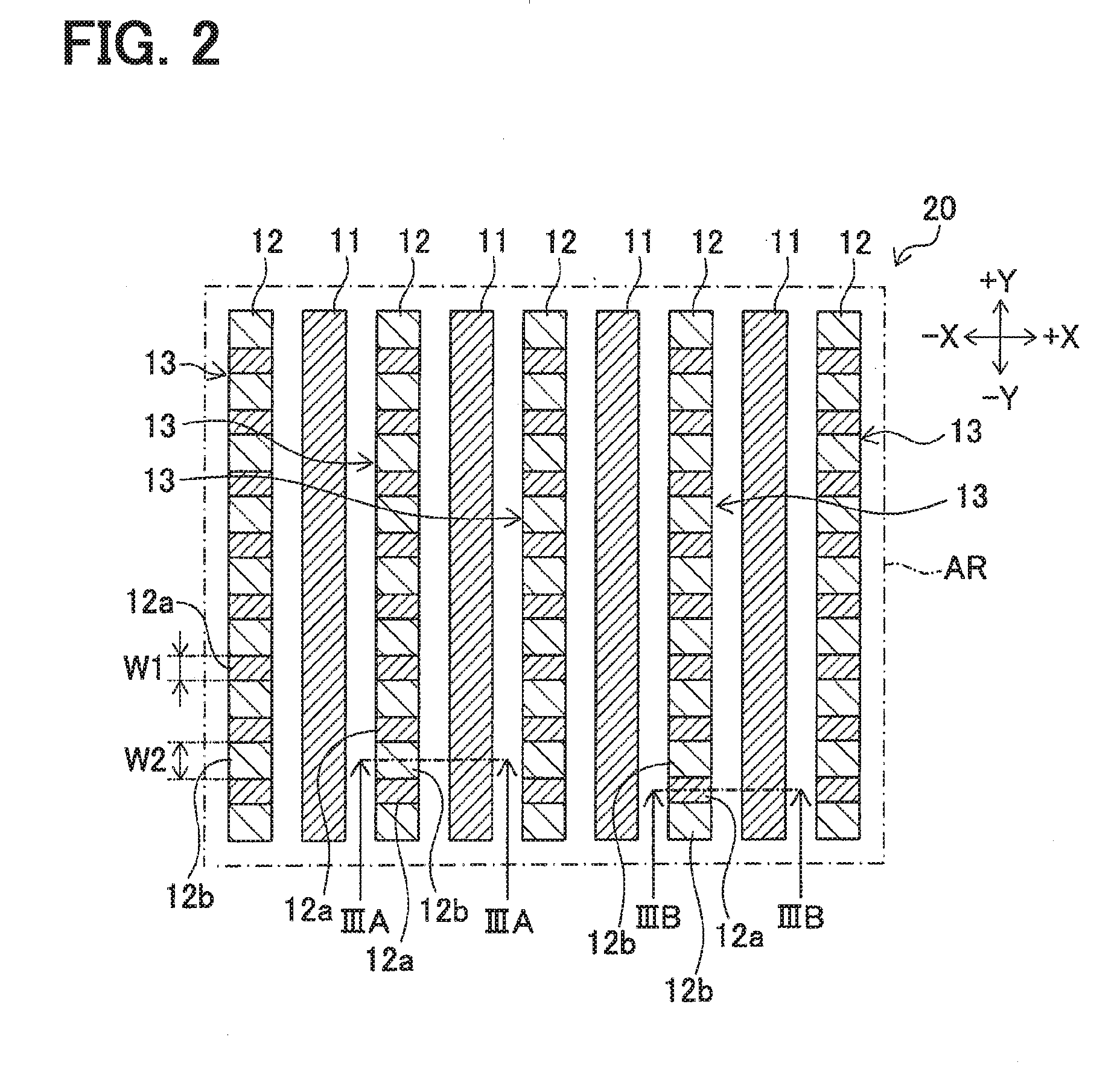Semiconductor device
- Summary
- Abstract
- Description
- Claims
- Application Information
AI Technical Summary
Benefits of technology
Problems solved by technology
Method used
Image
Examples
first embodiment
[0035]Hereinafter, a first embodiment obtained by embodying the present disclosure will be described below with reference to the drawings.
[0036]In a semiconductor device 1 illustrated in FIG. 1, plural semiconductor elements are provided on a surface 2a side of a semiconductor substrate 2 illustrated in FIGS. 3A, 3B, and the like. In the example of FIG. 1, elements such as a bipolar transistor 71, a resistive element 72, a memory 73, a capacitor 74, and a CMOS 75 are disposed on the semiconductor substrate 2, in addition to semiconductor elements 20, 30, and 60 formed as an LDMOS.
[0037]In this configuration, a known SOI substrate in which an insulating film (not illustrated) is interposed between the semiconductor substrate 2 as an element formation substrate and a support substrate (not illustrated) is used as a substrate constituting the semiconductor device 1. Thus, an n-type silicon substrate is used as the semiconductor substrate 2, a silicon substrate is used as the support su...
second embodiment
[0079]Next, a second embodiment will be described.
[0080]The second embodiment is different from the first embodiment in that any one semiconductor element or plural semiconductor elements is formed as a semiconductor element having a mesh structure as illustrated in FIG. 9A in the semiconductor device 1 illustrated in FIG. 1. Otherwise, the second embodiment is the same as the semiconductor device 1 according to the first embodiment.
[0081]A semiconductor element 40 illustrated in FIG. 9A is formed as an LDMOS transistor of a so-called mesh structure. This semiconductor element 40 has a lattice-like structure in which second region portions 12 functioning as a source region are extended in a vertical direction and a transverse direction. FIG. 9A partially illustrates a portion of the semiconductor element 40. However, in practice, the number of longitudinal regions 45 and transverse regions 46 constituting the second region portion 12 is greater than in the configuration of FIG. 9A. ...
third embodiment
[0093]Next, a third embodiment will be described.
[0094]A semiconductor element 50 illustrated in FIG. 10 is formed as a horizontal IGBT. In the semiconductor element 50, a first region portion 51 and a second region portion 52 are alternately formed in a surface layer portion of an N-type semiconductor substrate 2. The first region portion 51 is a region corresponding to a collector of the IGBT and the second region portion 52 is a region corresponding to an emitter of the IGBT. The third embodiment is different from the first embodiment in that any one semiconductor element or plural semiconductor elements are formed as the semiconductor element 50 as illustrated in FIG. 10 in the semiconductor device 1 according to the first embodiment. Otherwise, the third embodiment is the same as the semiconductor device 1 according to the first embodiment.
[0095]As illustrated in FIGS. 10, 11A, and 11B, the first region portion 51 is formed as a P-conductive type semiconductor region which is e...
PUM
 Login to View More
Login to View More Abstract
Description
Claims
Application Information
 Login to View More
Login to View More - R&D
- Intellectual Property
- Life Sciences
- Materials
- Tech Scout
- Unparalleled Data Quality
- Higher Quality Content
- 60% Fewer Hallucinations
Browse by: Latest US Patents, China's latest patents, Technical Efficacy Thesaurus, Application Domain, Technology Topic, Popular Technical Reports.
© 2025 PatSnap. All rights reserved.Legal|Privacy policy|Modern Slavery Act Transparency Statement|Sitemap|About US| Contact US: help@patsnap.com



